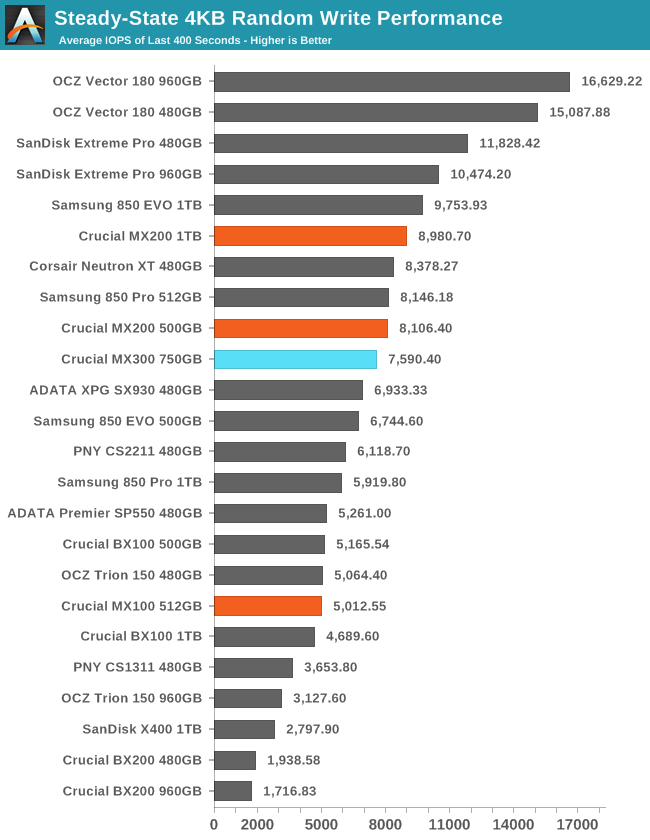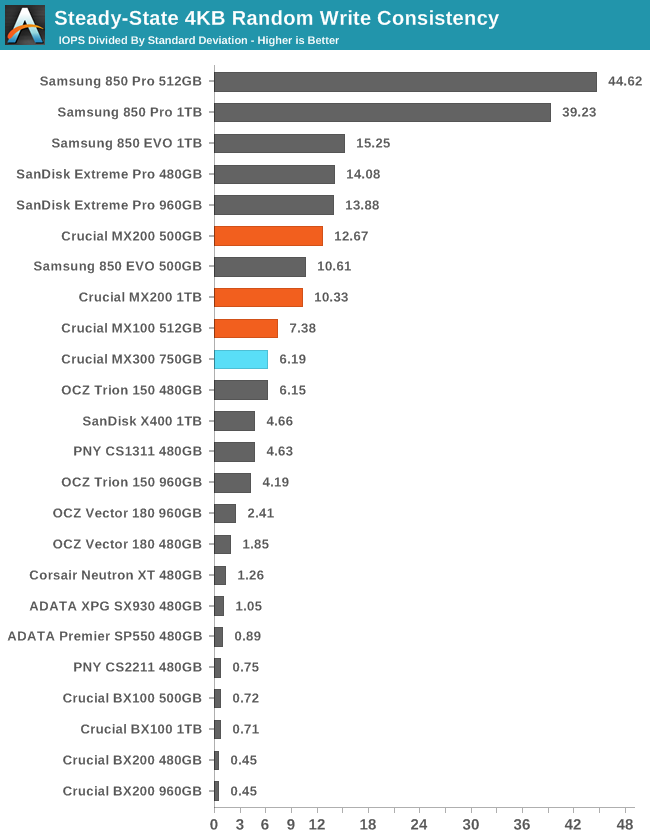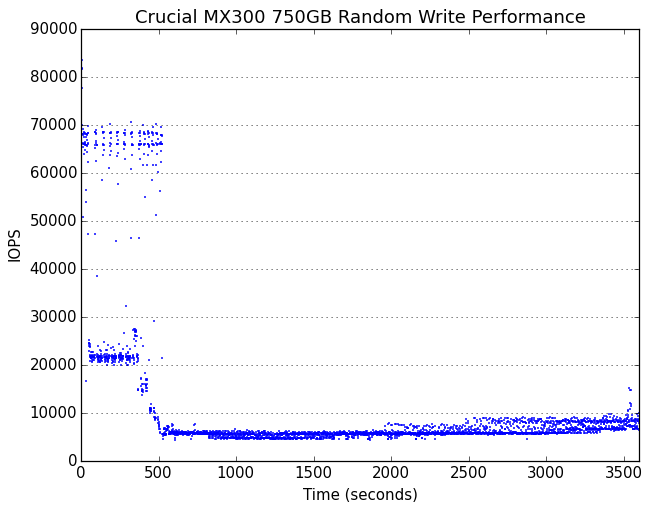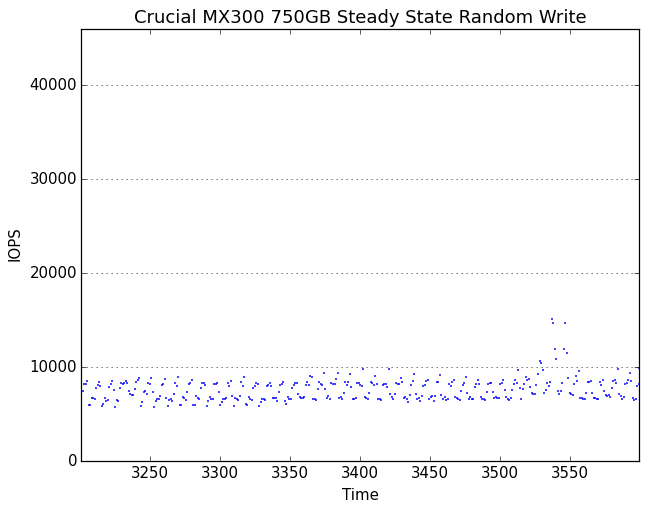The Crucial MX300 750GB SSD Review: Micron's 3D NAND Arrives
by Billy Tallis on June 14, 2016 9:00 AM ESTPerformance Consistency
Our performance consistency test explores the extent to which a drive can reliably sustain performance during a long-duration random write test. Specifications for consumer drives typically list peak performance numbers only attainable in ideal conditions. The performance in a worst-case scenario can be drastically different as over the course of a long test drives can run out of spare area, have to start performing garbage collection, and sometimes even reach power or thermal limits.
In addition to an overall decline in performance, a long test can show patterns in how performance varies on shorter timescales. Some drives will exhibit very little variance in performance from second to second, while others will show massive drops in performance during each garbage collection cycle but otherwise maintain good performance, and others show constantly wide variance. If a drive periodically slows to hard drive levels of performance, it may feel slow to use even if its overall average performance is very high.
To maximally stress the drive's controller and force it to perform garbage collection and wear leveling, this test conducts 4kB random writes with a queue depth of 32. The drive is filled before the start of the test, and the test duration is one hour. Any spare area will be exhausted early in the test and by the end of the hour even the largest drives with the most overprovisioning will have reached a steady state. We use the last 400 seconds of the test to score the drive both on steady-state average writes per second and on its performance divided by the standard deviation.

The MX300's steady state random write performance is below the MX200 but stays slightly ahead of the 850 EVO and well ahead of any planar TLC drive.

The MX300 earns a consistency score that is below the MX200 but about average, and certainly high enough for ordinary consumer workloads.
 |
|||||||||
| Default | |||||||||
| 25% Over-Provisioning | |||||||||
The MX300 lasts for over eight minutes before the SLC cache and spare area are completely exhausted, but during that phase it alternates between operating at about 22k IOPS and 65-70k IOPS. During the steady state phase there is gradual improvement in performance along with an increase in variability.
 |
|||||||||
| Default | |||||||||
| 25% Over-Provisioning | |||||||||
The steady state random write performance of the MX300 varies periodically between about 6k IOPS to 10k IOPS, with no outliers of slow performance. With extra overprovisioning performance is substantially higher and consistency is a bit better.










85 Comments
View All Comments
PVG - Sunday, July 3, 2016 - link
Does anyone know the cell size of Micron's 3D TLC?Jimster480 - Tuesday, July 5, 2016 - link
Haha the performance is horrible for the price.Seriously MX200 kills it which means Transcend SSD370s kill it too.
Even the crappy X400 kills it.... where is the Ultra II on the list? I'm sure it kills it also.
3D nand sucks.
Weasle - Monday, August 15, 2016 - link
These comments show that people don't understand the durability of this drive. Since it's using the 3D-Nand technology that Samsung first adopted, this drive has a better durability rating than a Samsung 850 Pro. Like holy shit.. It uses TLC memory too! It's a TLC drive that's more durable than a MLC drive. It's also a very good priced drive. from $0.26 to $0.24.. That's amazing pricing lol. I don't fucking know why people are complaining.ZapNZs - Monday, September 12, 2016 - link
3D-NAND for the lulz'ers?...I can coat a turd with 24k gold, but at the end of the day it's still crap. And this sure is crap...shame on you Crucial! Given this is [by design] an inferior product to the MX-200, they should have named it something other than the MX-300. TLC has inferior endurance, inferior real-world write performance, and inferior error correction capability. So here we have another TLC drive that is priced almost as high as Transcend's 370, but the 370 uses MLC...MADE FROM MICON'S OWN PREMIUM NAND SUPPLY. Don't count on this drive to give anywhere near the reliability or longevity of the venerable MX-200. This is like changing movie night up from The Godfather to Freddy Got Fingered. Yay Micron!TimAhKin - Friday, November 25, 2016 - link
Got this just now for £100. I think that for this price it's a really good deal.